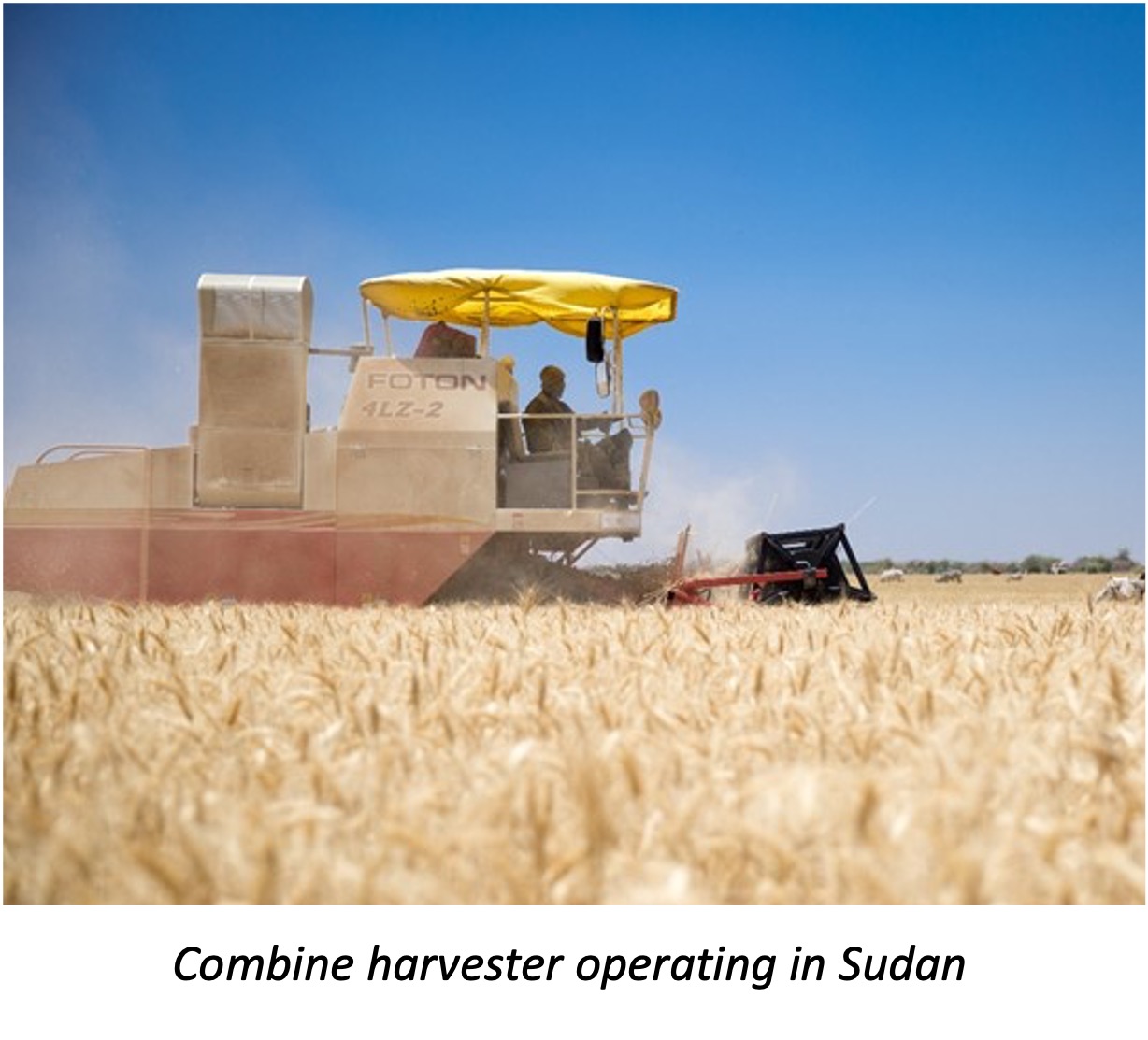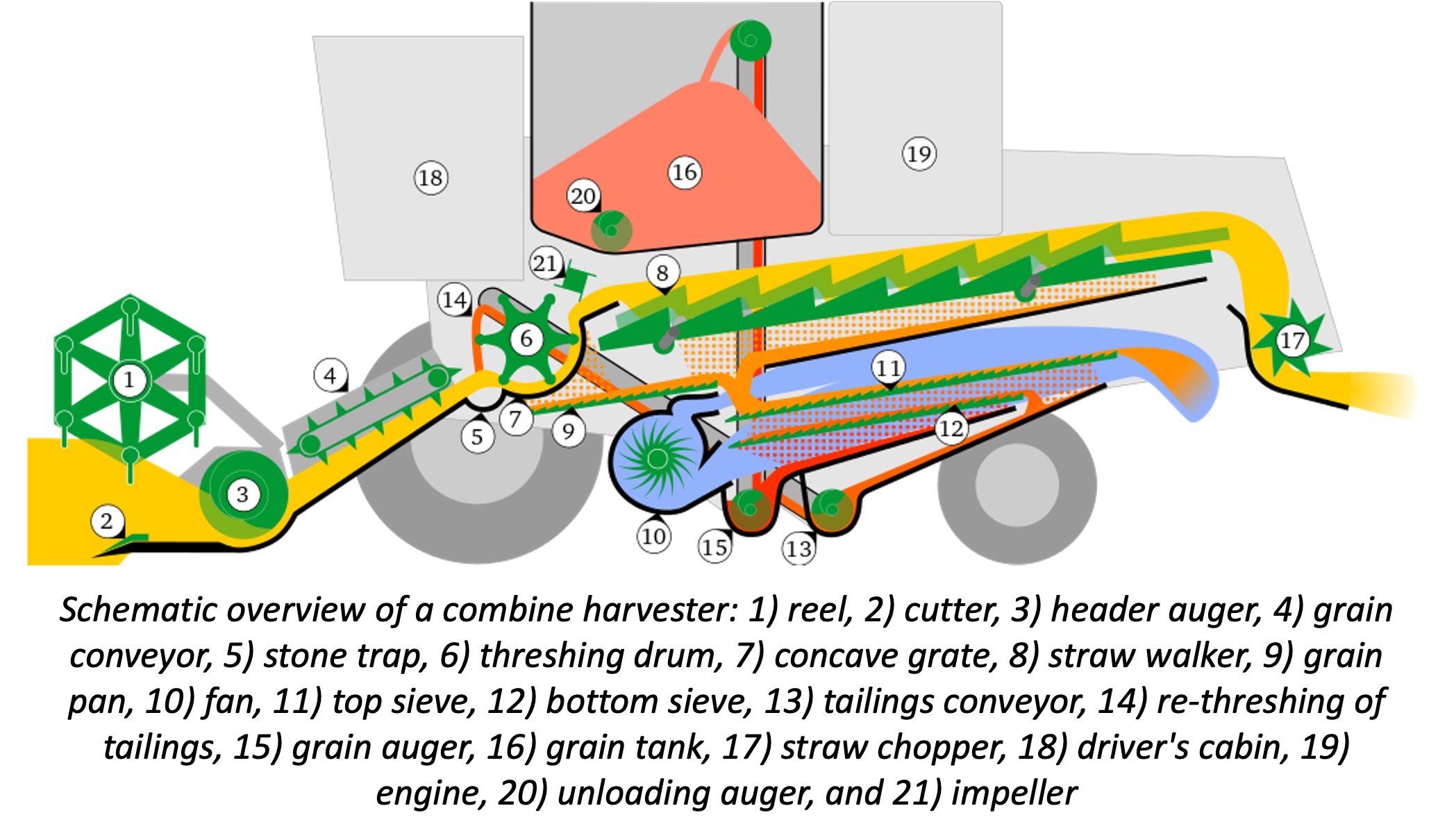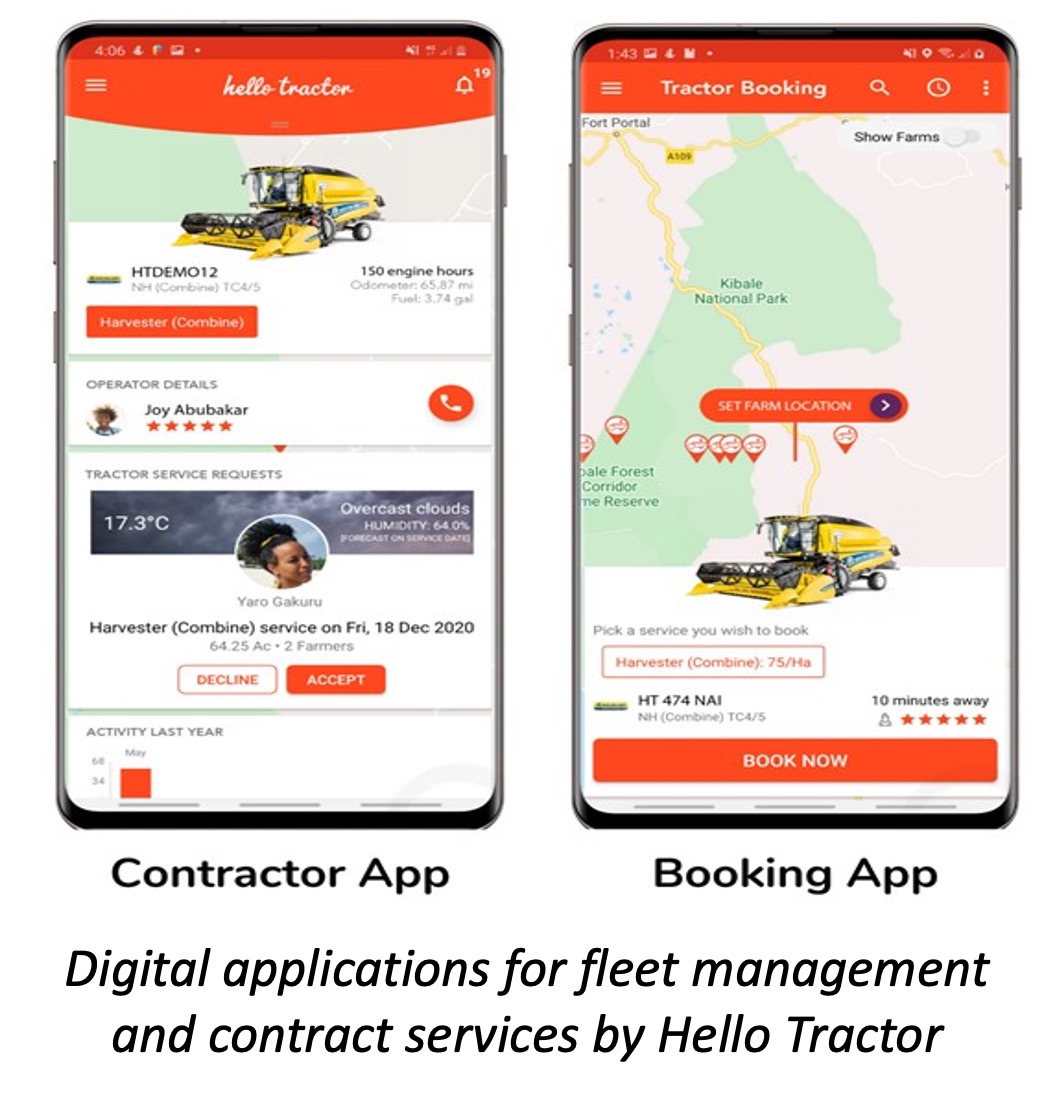Combine Harvesters and Fleet Management
Summary
A combine harvester is a type of modern agricultural machinery that performs multiple harvesting operations, i.e., reaping, threshing, gathering, and winnowing, in a single process. Combine harvesters are available in a broad range of sizes, going from small units that can handle several hectares per day to very large units for major operations that can handle several hectares per hour. The harvesters can be used for various crops such as wheat, maize, rice, soybean, barley, sunflower, amongst others, which allows it serve different types of farms in the same region and makes them more economical as their cost can be shared. Careful selection and efficient management of combine harvesters is key to optimize performance and minimize costs and it is possible to design a fleet by considering the technical and technological parameters of the machines. Tools exist that allow to identify the best makeup of a combine harvester fleet based on the field dimensins, crop portfolio, harvesting times, material costs and working time. Combine harvesters substantially reduce grain losses during harvest and costs of labour which is key for a field crop like wheat, and also make it possible to expand production in areas where there is a shortage of workers.
About the Solution
Wheat crops are gathered by the header with a slowly rotating reel and cutter at the front of combine harvesters while driving over the field. The cut parts are carried up the feeder throat by a conveyor and flight elevator that feed into the threshing drum consisting of grooved rasp bars and a concave grate. By friction the rasp bars pull the crop through concaved grates that separate the grain heads from the straw. Long pieces of straw cannot pass through the grate and float over it onto the straw walkers that lead to a chopper at the back of the combine where it is spurted down on the field. In most modern combines, the grain head is transported by a set of 2, 3, or 4 augers to the shoe which contains the chaffer, sieves and fan that separate out the chaff and grain. The lightweight chaff is carried away by air passing over the shoe and ejected from the back of the combine. An auger at the bottom of the sieves moves the clean grain into the tank from which it can be transferred to carts pulled by tractors that drive alongside the combine. The capacity of combine harvesters depends on their size, configuration and threshing speed.
Combine harvesters can be deployed in all wheat growing areas of Sub-Saharan Africa as it is possible to select the right size, configuration and performance for farms with different sizes, planting density and micro-topography. Large units with a cutting width of 4 m or more have a harvested weight performance of 15 to 25 ton per hour, and harvested area performance of 4 - 5.5 hectare per hour. Small “mini” combine units with a cutting width of 1.2m have a harvested area performance of 3 to 6 hectare per day. The high horsepower engines on combine harvesters allow using the machinery in lowland and highland areas with varying types of soil and atmospheric conditions. Hydraulic hillside leveling system are fitted on some combine harvesters allowing the machine to be operated on croplands with a steep slope without large amounts of grain falling on the ground. Fleet management systems are available as mobile and web application, and have extended offline capability for the various modules that can operate in remote rural areas. The digital tools for service contracting and performance tracking can be used anywhere since they have the ability to roam different telecom networks, and achieves a GPS accuracy of up to 2 meters.
The header on combine harvesters can be changed according to the required performance and crop type. Rigid headers are used for all kinds of cereals only whereas flexible headers that move over contours and ridges can be used for grains and soybeans. When moving between fields the header is removed and towed behind the harvester lengthwise so it can fit down narrow lanes. Tyre sets fitted on most combines can operate on a broad range of terrains whereas some have rubber tracks that put less pressure on the soil and can easily move over wet fields in lowland areas. Besides a combine harvester there is need for separate carts and tractors or trucks to carry grain to the storage facility or processor factory. Fleet management systems embed sensor technology for collecting intelligence on the internal workings and performance of combine harvesters. Multiple telematics solutions are integrated for optimizing the deployment of combine harvester fleets such as GPS tracking, fuel management, driver management, maintenance and servicing, fraud prevention and customer booking; which are operated via a dashboard available via smart phone.
Combine harvesters can be operated by a single person who is trained on the workings of electronic control panels and the mechanical parts inside the machine so to ensure that it is used in good order without breaking down. The height of crops, land slope and other features of a field have to be surveyed in consultation with farmers for determining the best approach to avoid grain losses, excessive fuel use, poor manoeuvrability and damage to irrigation furrows. Via a mechanized contracting platform owners of combine harvesters can offer services directly to farmers, or may work through booking agents that aggregate demand within their community, or a mixture of the two. Farmers who seek contract mechanization services must request, schedule and prepay for them via the SMS messaging or mobile applications that places them in touch with equipment owners or booking agents. Once a job is completed the balance of payment is settled through the digital system. Equipment owners and investors get detailed reports about the user and cost-effectiveness which allows them to improve business models and access financing for new equipment.
Commercialization
Commercially available
Solution Images
Institutions




